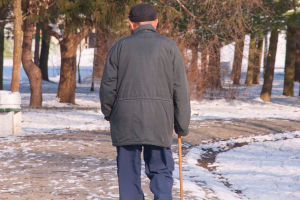Fluid retention is a common issue, especially among our Lykkers. Nearly a third of those affected are female. In most situations, it is driven by lifestyle factors rather than serious health concerns.
By identifying the causes and implementing practical habits, it becomes much easier to manage this condition effectively.
What Is Fluid Retention?
Definition and Mechanism: Fluid retention occurs when excess water accumulates in tissues due to inefficient drainage or high sodium levels, which draw water into cells and tissues.
Common Sites of Swelling: Accumulation typically affects the abdomen, thighs, ankles, and behind the upper legs. This can lead to inflammation and dimpling skin.
Main Causes
Elevated Sodium Intake:
Hidden sodium in processed snacks, breads, cheese, and canned goods often contributes more than the salt we add to meals. Elevated sodium attracts and retains fluids.
Sedentary Habits or Long Standing Periods:
Extended sitting or standing and lack of movement slow circulation and lymphatic flow, promoting fluid buildup.
Hormone Fluctuations and Stress:
Stress-induced cortisol can increase sodium retention. Hormonal shifts before your period may add to fluid buildup.
Natural Management Strategies
Reduce Sodium:
Cutting back on processed foods and reaching for herbs, spices, and citrus as seasoning helps reduce fluid retention.
Boost Potassium Intake:
Potassium balances sodium and promotes fluid elimination via kidneys. Daily intake of 2,600 mg (women) to 3,400 mg (men) is recommended. Good sources include bananas, sweet potatoes, spinach, avocados, legumes, and nuts.
Stay Hydrated:
Drinking sufficient water prevents the body from conserving fluids. Aim for at least 8–10 cups daily, increasing with physical activity or heat. Adding fruit or herbs to water can improve taste and motivation.
Increase Physical Activity:
Exercises such as walking, swimming, cycling or even stretching boost lymphatic circulation. Short movement breaks at work help too.
Raise Limbs and Use Compression:
Elevating legs and wearing compression socks can ease fluid buildup in lower limbs.
Include Magnesium & Vitamin B6:
These support fluid balance. Magnesium (310–400 mg daily) and vitamin B6 (≈1.3 mg) may reduce swelling. Include leafy greens, nuts, seeds, and whole grains.
Manage Stress and Sleep:
Quality sleep and stress-reduction techniques (meditation, breathing exercises) help regulate hormones that influence fluid retention.
Use of Natural Diuretics
Foods with Gentle Diuretic Action:
Cucumber, celery, asparagus, watermelon, and parsley help flush fluids naturally. These also provide vitamins and antioxidants.
When to Seek Medical Advice
Persistent or Painful Swelling:
If swelling remains after lifestyle changes, or is accompanied by pain, redness, or shortness of breath, professional evaluation is needed. Underlying issues like circulatory or kidney challenges may be present.
Expert Insights
Hydration Signals Body to Release Water:
Experts note that staying well-hydrated signals the body to stop holding on to fluid.
Potassium's Vital Role:
Authorities emphasize potassium for healthy fluid balance and blood pressure support.
Balanced Sodium–Potassium Ratio:
Strategies like the DASH approach, rich in potassium, magnesium, and fiber while limiting sodium, work well.
To Summarize
Fluid retention affects many Lykkers and is often driven by everyday habits. By reducing sodium, boosting potassium and magnesium, staying hydrated, moving regularly, managing stress, and using natural diuretics, it's possible to reduce swelling and promote wellbeing.
Persistent symptoms or sharp swelling should be reviewed professionally. These simple, friendly approaches empower readers to take control and feel lighter, healthier, and more vibrant.


